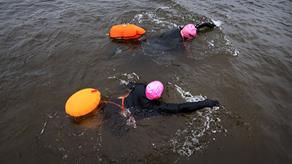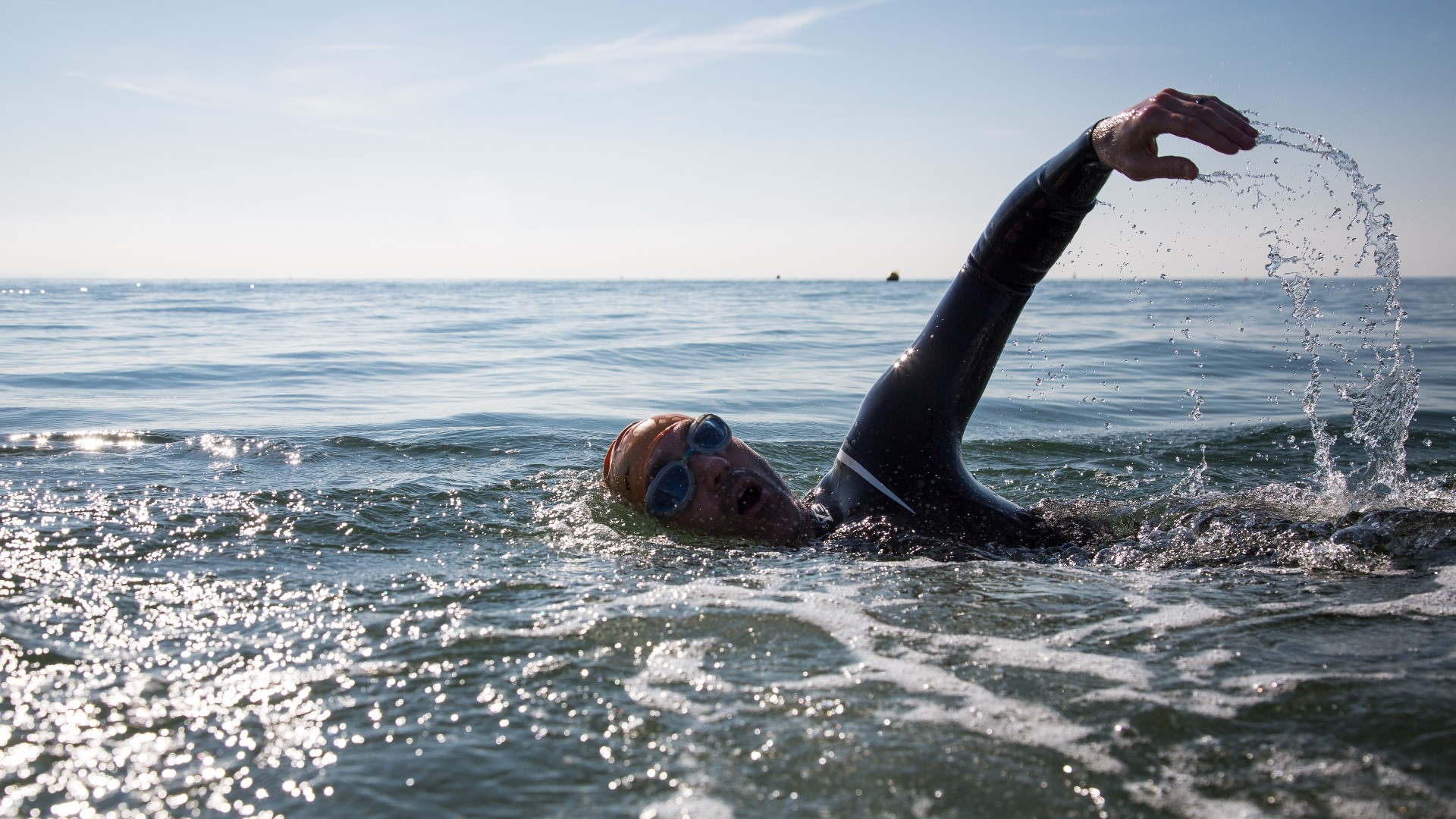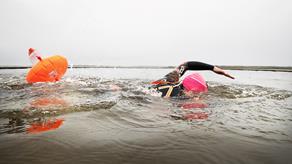

Open water swimming
Before you go
Going for a swim in cold, open water can be exhilarating, but it’s not without risk. So if it’s your first time open water swimming or cold water dipping, it’s important to speak to a health care professional to discuss the risks of cold water immersion before you go.
Always arrange to go with a buddy. Open water swimming is much more fun with someone else, and you can look out for each other. It’s also good to tell someone on shore where you are going and when you will be back. They’ll be able to call for help if you are overdue back.
Choose your spot
When at the coast, it’s best to choose a lifeguarded beach and swim between the red and yellow flags.
If there is no lifeguard cover, make sure you know:
- where you can enter and exit the water
- your location – are there any hazards you need to be aware of?
- what the tide and currents are doing - check the tide times before entering the water
- how to spot rip currents
- what to do if you get caught in a rip current. Don’t try to swim against it. If you can stand, try to wade rather than swim. Next, swim parallel to the shore until free of the rip and then head for shore. Raise your hand and shout for help.
Have the right equipment
Wear a wetsuit. It’ll help you stay warm and can increase your buoyancy, so you can stay in the water for longer.
Wear a brightly coloured swimming hat and take a tow float with you when swimming or dipping. These will help you to be seen in the water and a tow float can act as extra buoyancy if you need it.
Always take a means of calling for help with you, such as a mobile phone in a waterproof pouch and a whistle to attract attention. You might like to download the RYA SafeTrx app (UK) or Irish Sailing SafeTrx app (Ireland), which can track your swim and alert emergency contacts if you fail to return home on time.
Make sure you have plenty of warm clothes and a warm drink for after your swim. It is important to warm yourself up carefully.
Check the weather and tides
Always check the weather forecast and sea conditions before you set off. If you’re planning to be out for a long time, get regular updates. And be prepared to change your plans or cancel the trip if the forecast is not safe. If in doubt, don’t go out.
Check the weather. Check Met Office (UK) or Met Éireann (Ireland) for an inshore waters forecast.
Check the tides. Find tide tables and surf reports for the UK on the Met Office or Admiralty EasyTide.
Acclimatisation
Before you enter the water, assess the conditions. If the water is too rough for swimming, don’t get in. Know your limits – depending on the conditions, you may need to swim less or closer to the bank or shore. The temperature of the air and water is also important – the colder the water and air temperature, the quicker you will cool down. So the colder it is, the less time you should spend in the water.
When you go open water swimming, it’s very important to enter the water slowly and allow time for your body to get used to the cold. Never jump or dive straight in, as this could cause cold water shock.
To help yourself acclimatise, splash the cold water on your neck and face. Try not to hold your breath for an extended time when you first get into the water.
Once you are in the water, remember that cold water immersion can seriously affect your swimming ability. Stay within your depths and swim parallel to the shore. The wind can push you off course when open water swimming, keep an eye on your exit point and make sure you can return to it.
Float to live
Entering water under 15°C can seriously impact your ability to breathe and move. If you get into the water too quickly or fall in unexpectedly, you may experience cold water shock. If this happens, fight your instinct to swim. Turn onto your back and tilt your head back in the water, submerging your ears. Relax and try to breathe normally, using your hands to helps you stay afloat. Wait until the shock passes then call for help or swim to safety.
When open water swimming, you might get tired. Roll on to your back to rest and hold on to something that floats, like your tow float. Then you can signal for help if needed.
In case of an emergency
In case of an emergency, call 999 or 112 and ask for the coastguard.
You should always carry a means of calling for help when open water swimming or cold water dipping. This could be a mobile phone in a waterproof pouch. Remember, if you don’t have any mobile phone signal, don’t panic. You can still try calling 999 or 112, even if your own mobile phone network has no coverage. Your phone will try to connect to any other network available.
You might also like to consider downloading the RYA SafeTrx App (UK) or Irish Sailing SafeTrx (Ireland) app. It can track your swim and alert emergency contacts if you fail to return home on time.
Summary
- Be prepared. Check the weather and tides, choose your spot, go with a buddy, have the right equipment.
- If in doubt, don’t go out. No matter how much preparation you do, or how experienced you are, if a swim doesn’t feel right there is no shame in getting out of the water straight away, or not entering.
- Make sure you acclimatise to avoid cold water shock.
- Be seen. Wear a bright coloured swim hat and take a tow float.
- Stay within your depths.
- Float to live.
- Call 999 or 112 and ask for the coastguard in an emergency.
Check out our open water swimming safety leaflet (2.88MB PDF).








